Finally got me a pro body, except it hasn’t Nippon Kogaku on the base. I have been lured to the Darkside by this Canon model that was the flagship model from ’94 until 2000. And compared to the Nikon equivalent the F5, the EOS-1N a bit of second hand bargain. But is it a worthy choice ?

Unlike Nikon, Canon’s Flagship EOS models had a shorter life with just 3 main models. The 1989 EOS-1 is often seen as the camera that won the market for Canon and the EOS-1V would manage an incredible 18 year run before it was discontinued in 2018. They would dominate the sports Photogs camera market until digital took over. It also would lead to Canon’s first steps into the dSLR market
But the EOS-1N sat in the middle.
The rise of Seikikōgaku kenkyūsho
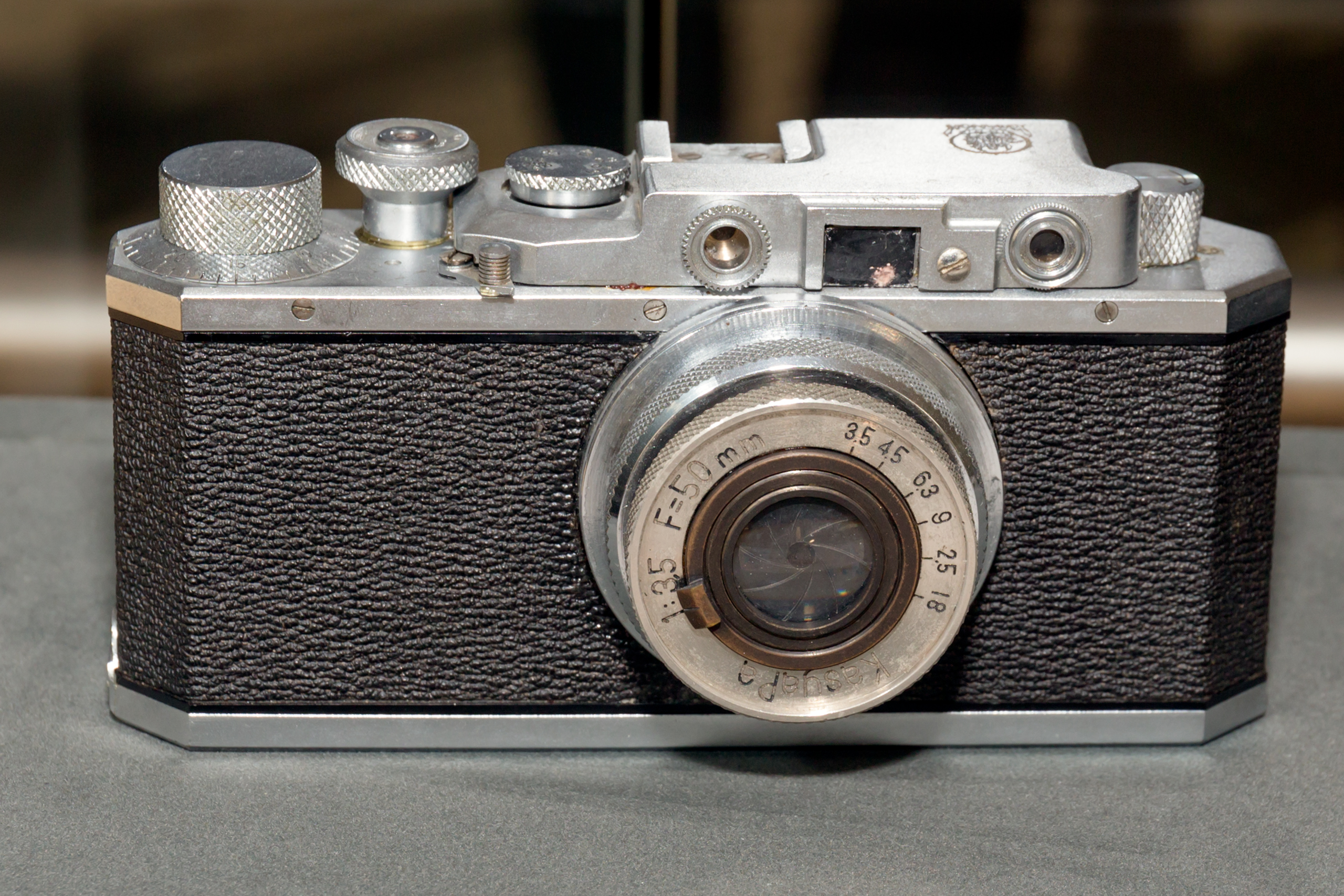
Canon can trace it roots back to 1934 with the protype rangefinder the Kwawon. This would be followed by the Hansa Canon, a Leica-likely that made it into production in 1936. The company would become Canon Camera Co post WWII in 1947. Ironically in the early days when Canon had the camera but not the lens making skills, a certain Nippon Kogaku (aka Nikon) helped them out
Canon would become a big player in the Japanese rangefinder & compact market of the 60’s and 70’s. It would move into SLR manufacture and arguably came closest to challenging Nikon dominance with it’s cheekily titled F-1 pro models.
But that all changed in 1987
The land mark EOS 650 is now regarded as the camera that changed the SLR market forever.
It ditched the legacy mechanically coupled lenses of the FD class and use the new electronically only coupled EF lens mount. This allowed the lenses especially with USM to focus way more rapid than any of the competition as well as give full electronic control to aperture. It wasn’t enough to tempt the serious photogs being somewhat plasticky and given the EOS EF mount was new a slight lack of lenses.
But the original EOS-1 changed that and was met with critical acclaim in 1989. By this time new lenses were arriving and Canon had cleverly designed the camera to compete against the aging classic Nikon F4. There was a gamble.
The F4 could not only use the 20 or so AF lenses at the time of the EOS-1 launch but it could use a mountain of legacy MF lenses, where as Canon had ditched it’s older FD system (although with a lens adaptor they could still be used). By 1989 Canon were offering more AF lenses and their AF system was way faster especially with USM lenses
The EOS-1 had some minor advantages with more metering modes and ability to do 1/3 stop adjustments. It was lighter as it gambled with a move to Polycarbon for the body.

Canon also craftily marketed. These also ran lens loan schemes at major sporting events starting their dominance of the sports photog market. By the 1992 Olympics the main sports press camera was Canon.
Canon would not rest on their laurels. Basically Nikon wouldn’t let them. The faster AF-S lenses were released by Nikon and whilst the F4 could support them, it’s aging processor didn’t give them that much of an edge. The prosumer F90 changed that and gave a portent of what the F5 could bring.
The EOS-1N
Unlike Nikon (bar a brief period with multi tweaked D1 models) Canon have called all their Professional Photog SLR and dSLR EOS-1 (the D digis have the D suffix) up to date.
The 1N is a major step up from the original. For us second hand user there is a major point. The shutter is now rated up to 100,000 shots making it potentially a safer choice than a old EOS-1 with a rating half that (both lag behind Nikon’s pro shutters that had 150, 000 rating)
Canon also went for Nikon’s remain dominance area – metering. The camera featured a 18 segment matrix meter overhauling anything Nikon had offered to that point. The gain would be short lived as the F5 came with CCD metering of over 1000 pixel points but it was very much a strike in the Nikon’s area of dominance.
Styling of the EOS-1N
The body is poly carbon but with weather sealing features. The pentaprism is fixed but offers 100% field view and has a light level adaptive LCD display. The build quality is very high. In 1996 Popular photography also tore one down alongside a Rebel XS (EOS 500). The build differential are quite telling between budget and pro.
The camera is sturdy stuff. Mines misses some of the rubber seals over ports for things like the remote release. The film door requires both a button to be pushed in as well as the latch for extra security. The beneath the body is a combination between polycarbon and key reinforced metal parts like the shutter area. At the time there was still some debate over this hybrid approach v all metal. But the direction of travel in camera design rapidly moved in favour of the Hybrid.
– The Film Variants
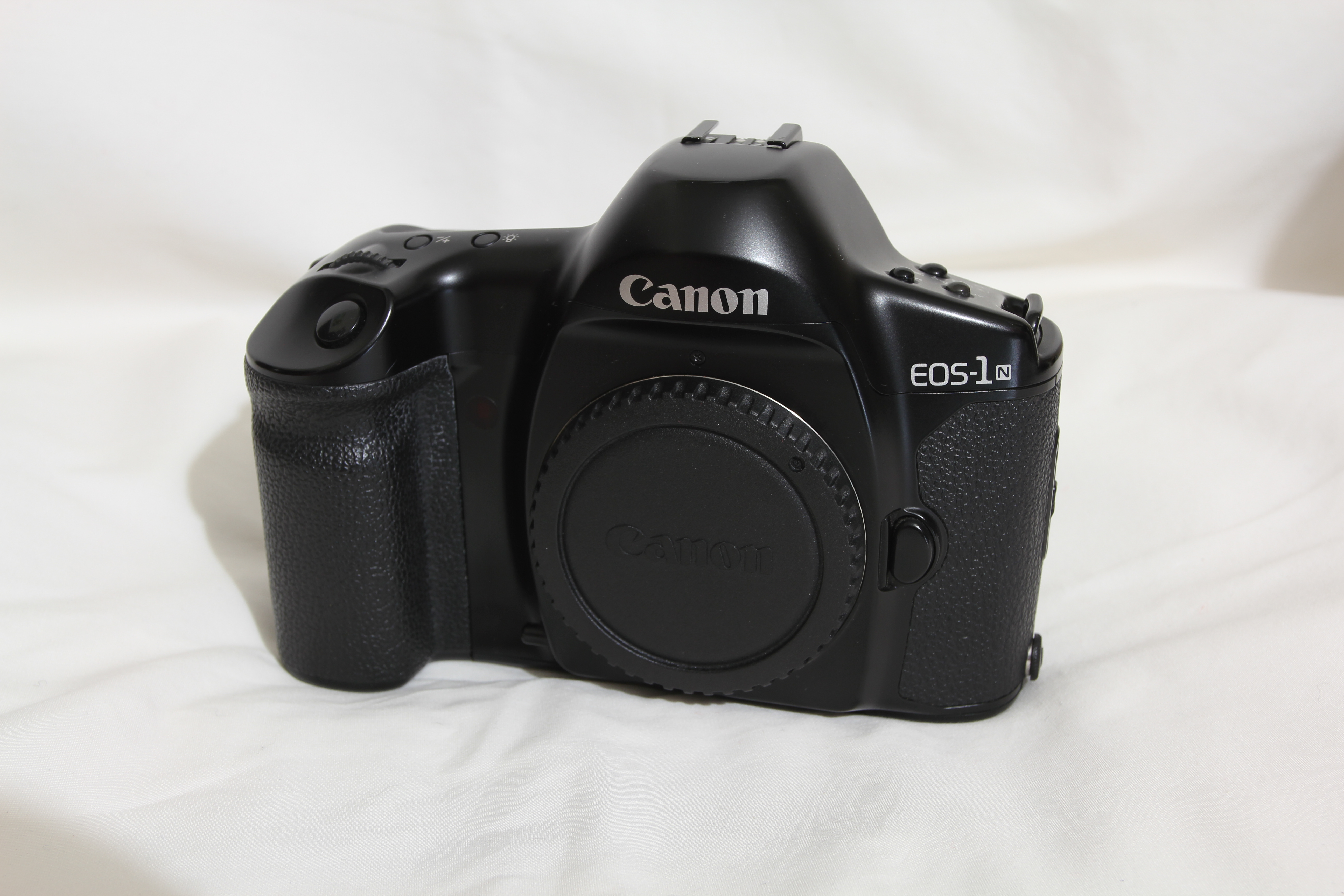
Almost all versions are built round the core camera but dependant on the battery pack. The one exception is the rare 1995 which uses a pellicle mirror. This is semi transparent and does not move during shots so you get no mirror blackout at the price of some lost light both to film and viewfinder.
Otherwise you get the core model which is powered by 2x CR5 batteries. The camera was also sold as the the EOS-1N DP with the BP-E1 battery pack (4xAA). This uses 4xAA (alkaline or rechargeable NiCads) and also allows you to fit 2 CR5 and switch between them.
The most widely sold version was EOS-1N HS1 came with the promise increasing base 3fps to 6fps with the booster PB-E1 that takes 8 AA (or a NiCad). It is standard on the RS version which can reach 10fps. A revised version did accept AA lithium which are not recommended on the earlier version or the BP-E1. It unlike the BP-E1, has an additional shutter button and AE lock on the pack.
Mines came in DP format which is handy for the option to use AAs. But sadly it was missing the GR-E2 battery door allowing me to use it without the pack (the older GR-E1 door can also be used). This is hard to get without paying a hefty the price (£60-80). But I suppose it spent it half it’s life against the F5 which had a non removable pack
-EOS-1N based dSLRs

What is often forgotten is that the EOS-1N was Canon’s entry into digital SLR territory. That move was trigger by Kodak.
Kodak had become the commercial pioneers of the dSLR market with their partnership with Nikon with the original Kodak DSC being based on a Nikon F3 in 1991. The DSC series would move forward in partnership with Nikon through the AF age of the 90’s & beyond. But Kodak also started making dSLR with Canon all based on the EOS-1N beginning the DSC-5. These models were available in colour, monochrome and IR sensor variants
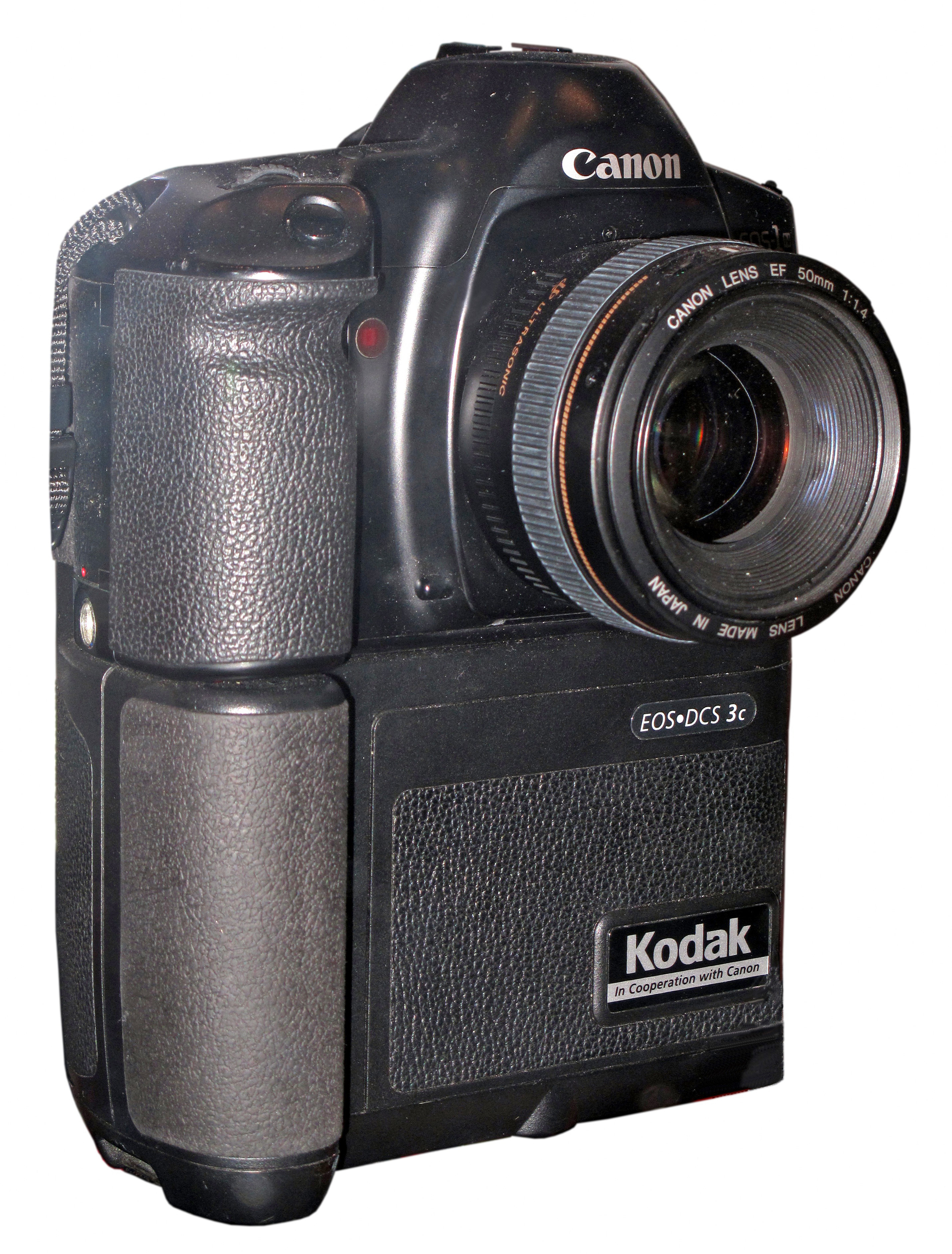
I suspect Kodak saw Canon’s rise and wanted to hedge bets as they carried on producing dSLR based on both Nikon and Kodak film cameras into the noughties. The last DCS dSLR was based on a canon EF mount dSLR but ironically one made by Sigma.
The early models were bulky but the Canon DCS 500 series looked more like the EOS-1N HS1. Canon released its own brand version of these the EOS D2000 & EOS D6000 (2 & 6MP respectively) effectively becoming Canon’s first branded dSLR 1998. These would be followed by the legendary EOS-1D, Canon’s first in house dSLR later that year. That was based on the EOS-1V (arguably just an evolved 1N)
Core spec
The upgraded Multi-BASIS autofocus control offers 5 AF points in a horizontal row. The middle on is cross type. Both single shot and AI servo AF tracking was available. Unlike the prosumer models from the EOS-5 there is none of the mind reading eye focus stuff in any of the EOS-1 series cameras
Shutter speeds 30-1/8000 in all modes plus a bulb feature. 1/3 stop increments are possible. Matrix, spot, partial (9%) and centre-weighted metering all available along with AEL and AFL. It also offers selectable spot (3.5%) metering on any of the 5 focus points with a fine (2.3%) option on the centre one.
Auto Bracketing is available as well as up to 18 user set options
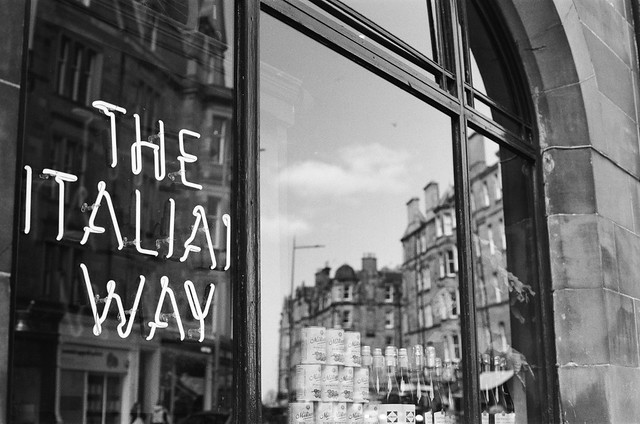
The camera offers the standard PSAM (or PTvAvM it is canon after all) as well as a AE Depth of Field mode. There are no frippary models like portrait or landscape (this is a pro camera). The only other modal options are bulb and multi-exposure
There is no inbuilt flash but the camera supports Canon’s A-TTL (but not E-TTL) metering. X-sync is 1/250.
DX coding with manual override is also offered.
Layout
At first glance looking down you’d honestly mistake this for a Nikon of the 1990’s not a Canon. Whilst their consumer models had got it right IMHO with a mode and command set up, this looks more like a Nikon. I guess it suited pros whom likely would fix into one mode and largely leave it there. It essentially is the same system seen on the original EOS-1
So you do get the Canon vertical command dial but everything else needs to be triggered by button pushes. It’s easy enough and logical (it is no F70). You have button for mode and metering adjustment buttons on the as held left side of the pentaprism whilst the the LCD is on the right surrounded by logical buttons like the EV comp, LCD backlight, AEL and focus selector. The LCD is bright and has relevant details
It was a jump for older Photogs used to the older shutter dials and oddly a bit of a jump for someone used to a modern dSLR as well. It however does not take too long to get into
Behind a door on the grip side are buttons for custom modes and the drive mode (important for AEB).
On the rear is a second control dial and its on/off switch. For most you’ll only use in manual mode or for flash options. Below is the on off switch which notably allows you to automatically silence the usual AF beep
The viewfinder
It might not have an interchangeable head but Canon went all out lux here. The bright pentaprism is big and provides 100% FoV with a x0.72 magnification. The viewfinder has built in diopter correction (plus available diopter adjust lenses if you are really near blind). There is also a built in rear blanking mechanism for shooting away from the eye in bright light.
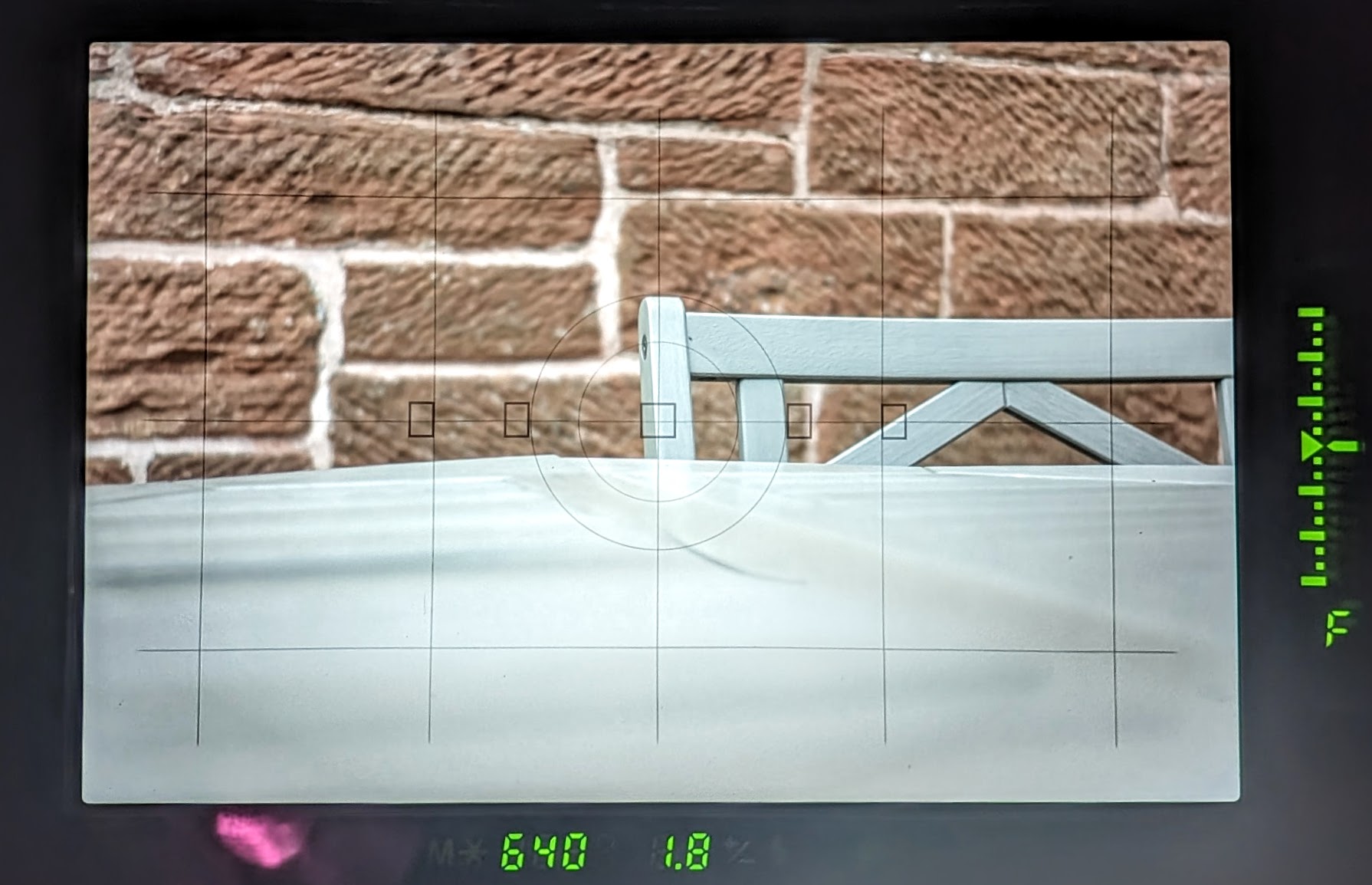
The standard Ec-CII laser matte focus screen is simple with just etching for the spot focus. Superimposed on this and the other screens are the 5 AF squares which glow red when focus achieved at that spot. The camera is compatible with other Ec screens (mines had the one geared for Tilt and shift lenses). Mir has a handy list of the original ones . Be aware certain screens may cause issues with one or metering systems as this Canon Guide explains. One notable one is the Ec-R which brightens the image by ~1 stop over the standard finder. It was the default one in the EOS 1 RS.
The LCD displays adapt to light levels and displays sensible information along the base with a metering bar and shot remaining display. The latter is a bit basic only displaying if you are out or 1-9 shots remaining. Otherwise you just get a F as pictured.
Pro Extra
So you get DoF preview, mirror lock and an optional data back. The Command back E1 does the usual LCD printing but it can also add shot data off frame on the roll of film and is useful for times lapse photography. The command modes are interesting (you can change rewind to be high speed or near silent for example).
There are lots more. MIR provides a lot of issues including cross model compatibility.
Lens Du Jour
This is intended for use with Canon’s EF lenses – End of.
That’s no bad thing. In almost 40 years of production, these are legion. The company may be winding down EF production but still sells more than a dozen still today.
As to third Party as ever I’d urge a little caution but my Yongnuo YN50mm worked fine. This is notorious with pre 2000 EOS bodies but worked here. Please be aware there does seem to be some variation in Yongnuo lens firmware so don’t take this as a total guarantee.
It will work with other lens mounts with a decent convertor ring. It fails with cheap rings with the battery bc warning but my K&F concept M42 to EF adaptor worked fine. I even got metering in stopdown fashion but no focus assist.
EOS-1N In use & Results
Loading is easy. Unlike many later cameras it does not prewind making it more likely to squeeze those extra shots out of a roll. But in the unlikely event you open by mistake your shots are more likley to be destroyed.
The camera’s on switch has 2 settings allowing you to forgo or have the beeps for focus lock etc. Nice to see out of the box and not something you need to select.
And this is fast. I shot it mainly with a consumer grade USM kit zoom. It feels noticeably nippier than my budget/mid range EOS bodies from the the 90’s and turn of century but later models like the 300X felt similar. Accuracy was good.

Metering was on the money for the shots I took. It does feel more accurate then the already reasonable 5-6 zones seen in older consumer EOS cameras. In the harsh highlights and dark shadows of a very sunny spring day in Edinburgh it coped well. That said these shots were all taken on negative film which has quite a bit of latitude.
It was a comfy camera to use bar the weight. The core camera is 885gms without any lens or battery. That’s over twice the weight of the 300X and mines came with the battery pack
EOS-1 series v Nikon F series (F4-6)
These are all excellent cameras and represent evolution on both sides. Nikon F5 And F6 had a chance to weight up their rival models. I have picked the faster F4s over the standard F4 and all cameras fps are quoted with standard pro power winders.
| EOS-1 | EOS-1N | EOS-1V | F4s | F5 | F6 | |
|---|---|---|---|---|---|---|
| Launch | 1989 | 1994 | 2000 -2014 | 1988 | 1996 | 2004 -2020 |
| AF Points | 1 | 5 | 45 | 1 | 7 | 11 |
| Meter Zones | 5 | 16 | 21 | 5 | 1,005 pixels | 1,005 pixels |
| Top Shutter | 1/8K | 1/8K | 1/8K | 1/8K | 1/8K | 1/8K |
| Shutter life | 50K | 100K | 150K? | 150K | 150K | 150K |
| max fps* | 5.5 | 6 (10+) | 10 | 5.7 | 7.4 | 8 |
| Custom func | Y | Y | Y | N | Y | Y |
| Change screens | Y | Y | Y | Y | Y | Y |
| Change Heads | N | N | N | Y | Y | N |
*all with power winder options
+ EOS-1 RS with PB-E1
Final Thoughts on the EOS-1N
This is good.
It is a sweet point choice for the savvy Canon shooter. A more durable shutter than the older EOS-1 and resell value is much lower than the 1V. Much cheaper than than a F5 and a little less than a F4.
It is solidly built and weighty too. Finding a model with the standard configuration cover makes sense but both that cover and the BP-E1 are not cheap (the latter I’ve seen for more than I bought this camera with the pack !!). If that is an issue you may be better looking at the later prosumer EOS 3 and EOS 30/33 (ELAN 7 series) models which have better AF and metering systems and pretty robust bodies.
On paper it out performs the F4 except on glass availability (no native legacy support). The battlelines are more nuanced v the F5 which on paper is the better camera and lets be honest Nikon were able to tweak to combat the 1N but the differences are slight and the F5 is not as cheap (£120-200 v £350-750)
Other EOS-1N Info and reviews
For moder reviews I would check out Alex Luyckx’s CCR review, the 3rs and filmisawesome. For a period review you can see Popular Photography‘s test in June 1995 (5 stars)
MIR as mentioned is an invaluable resource point for tech info on this camera.
Manual can be found at Canon, Butkus and 35mm-compact,


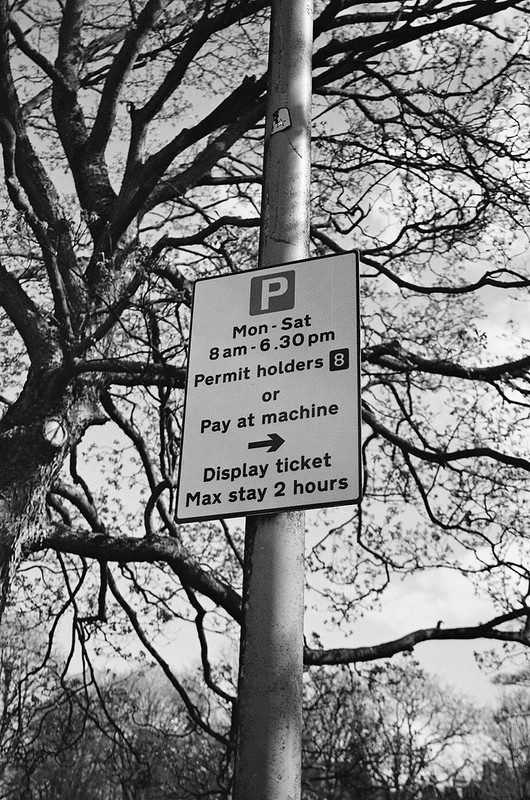
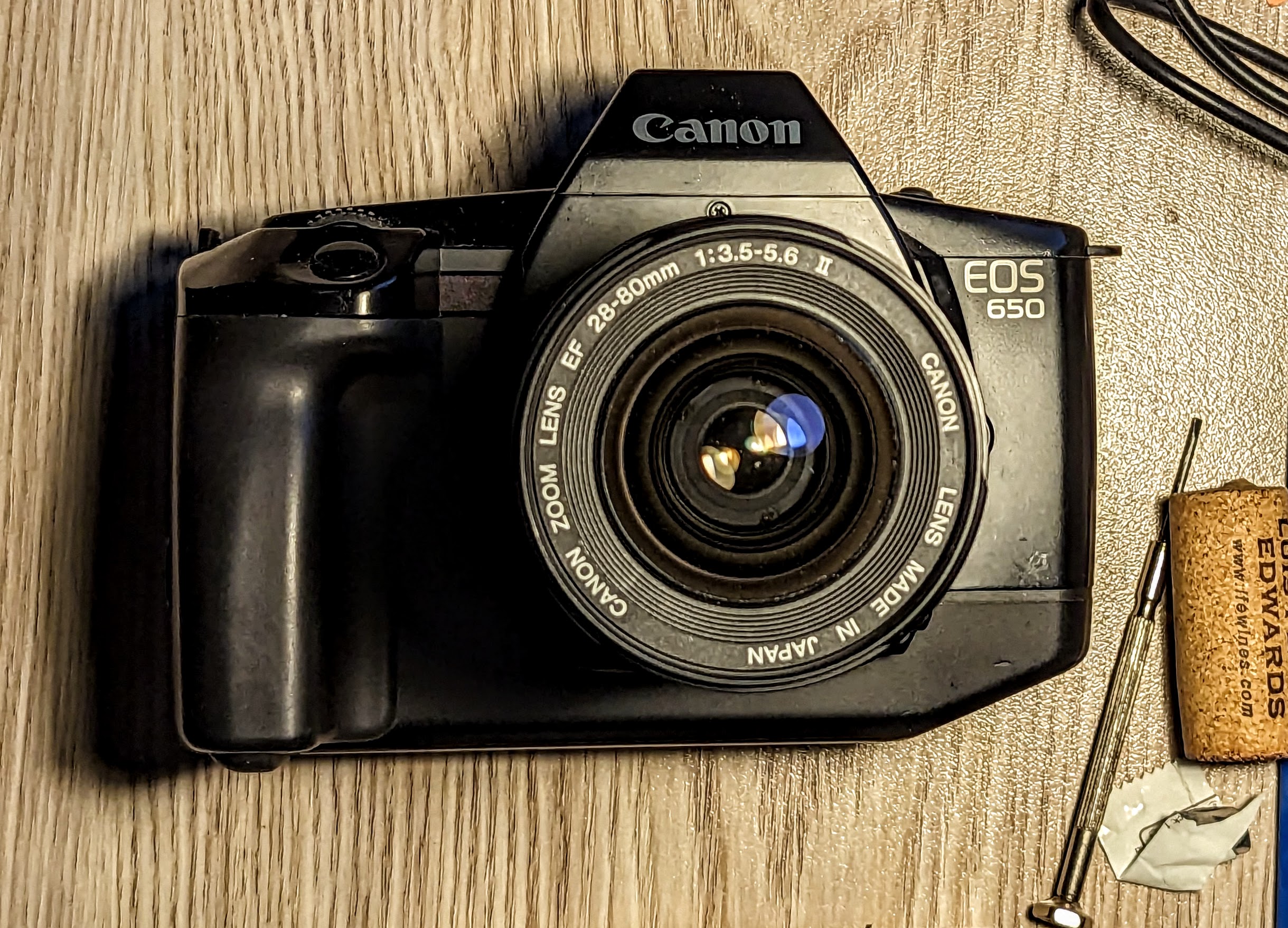
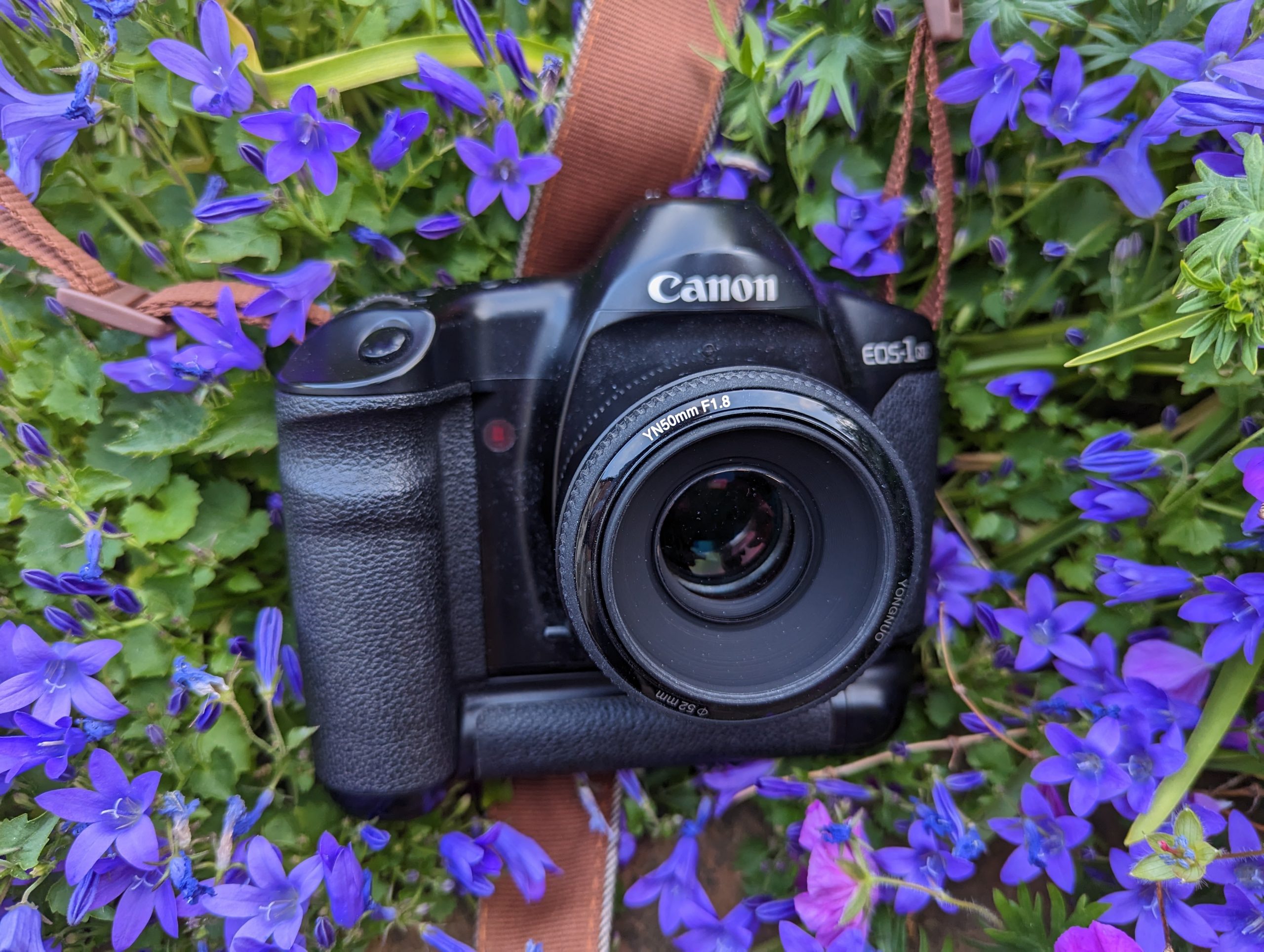

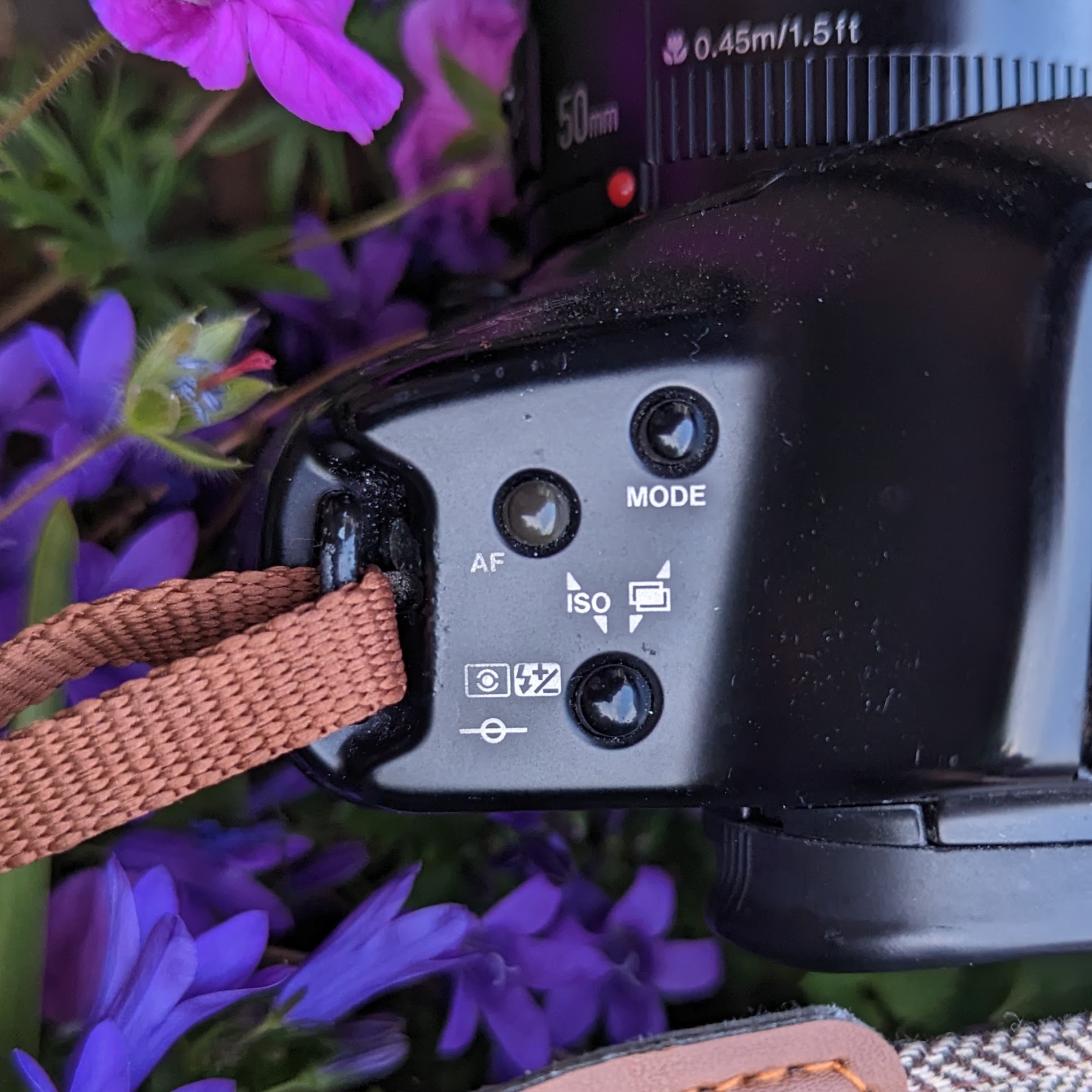

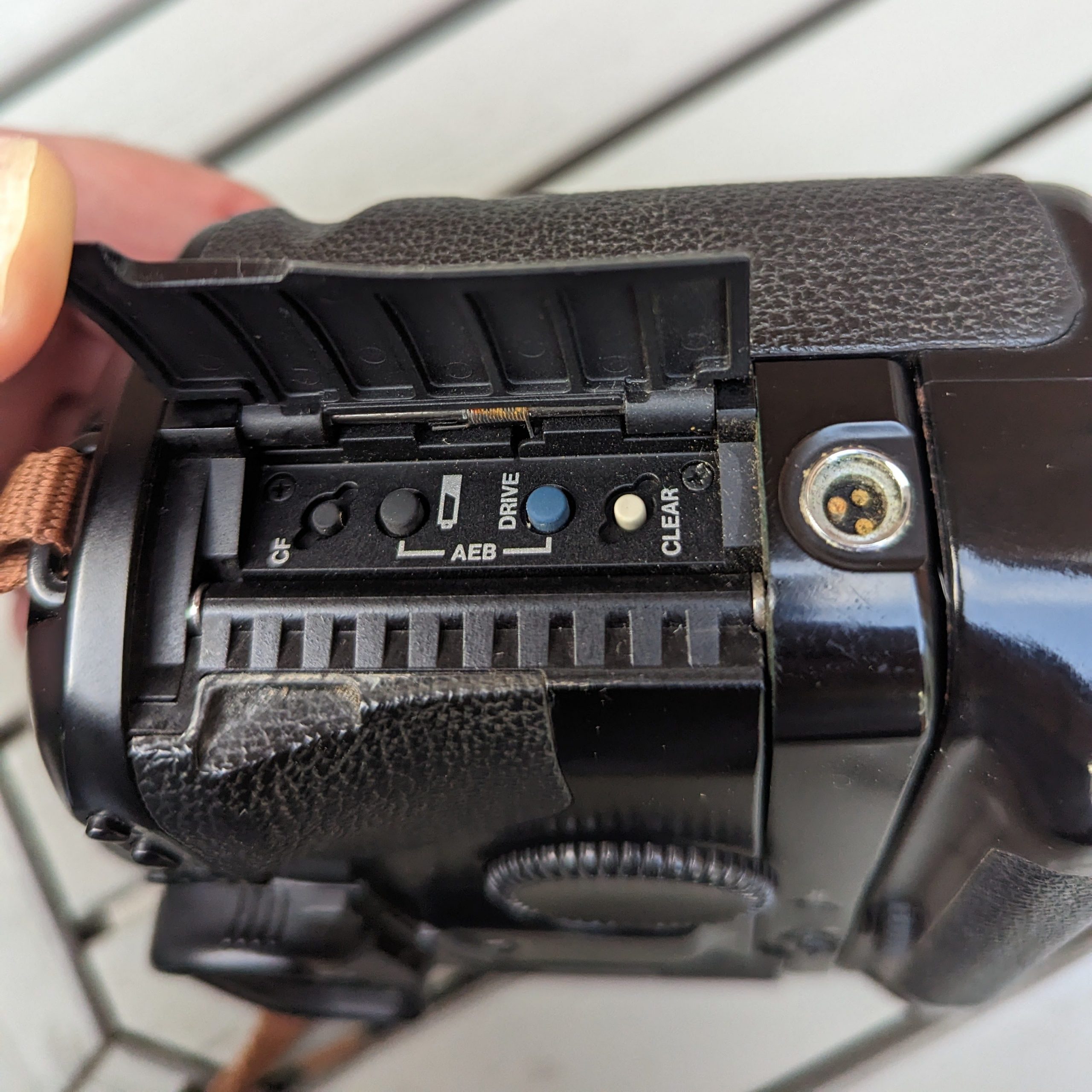
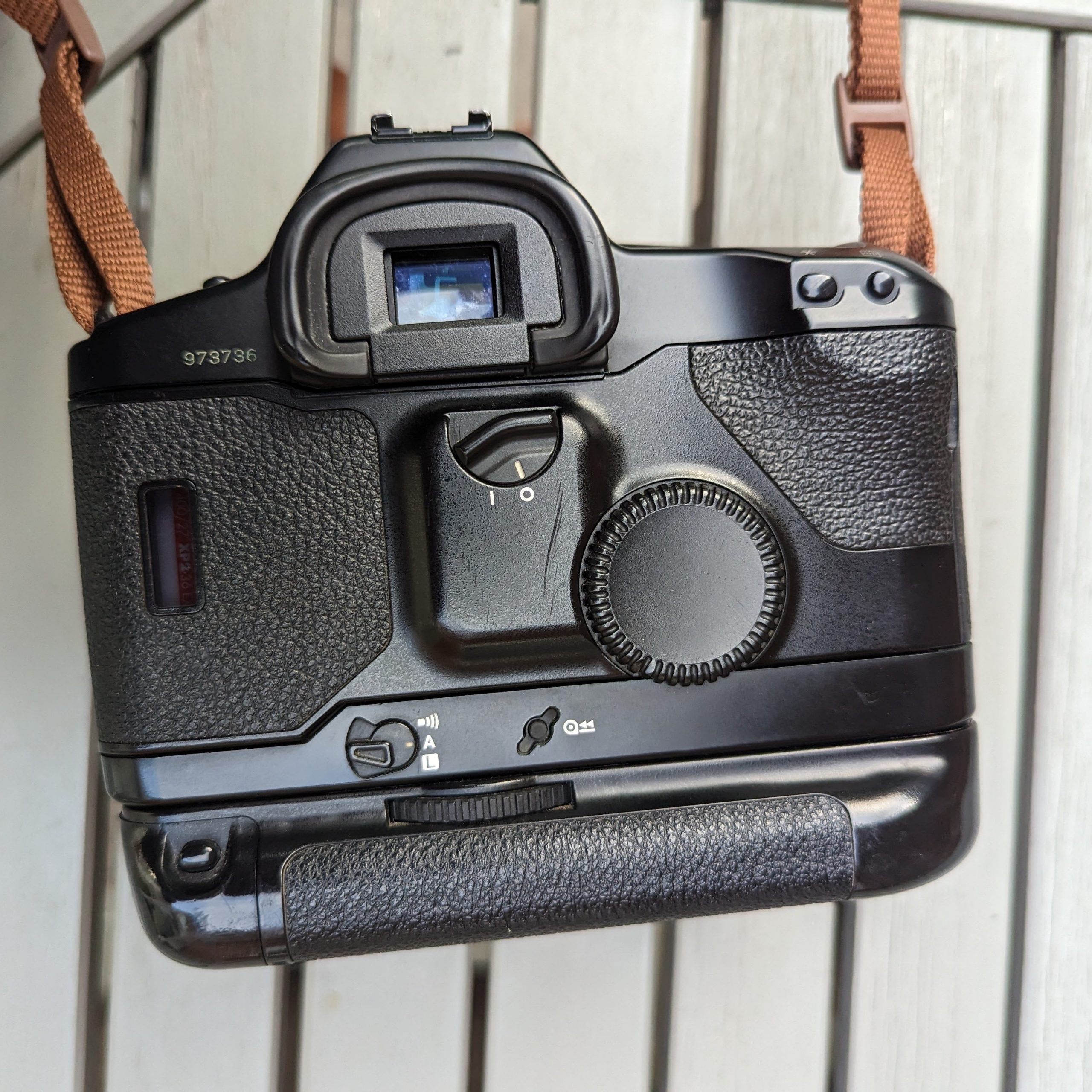
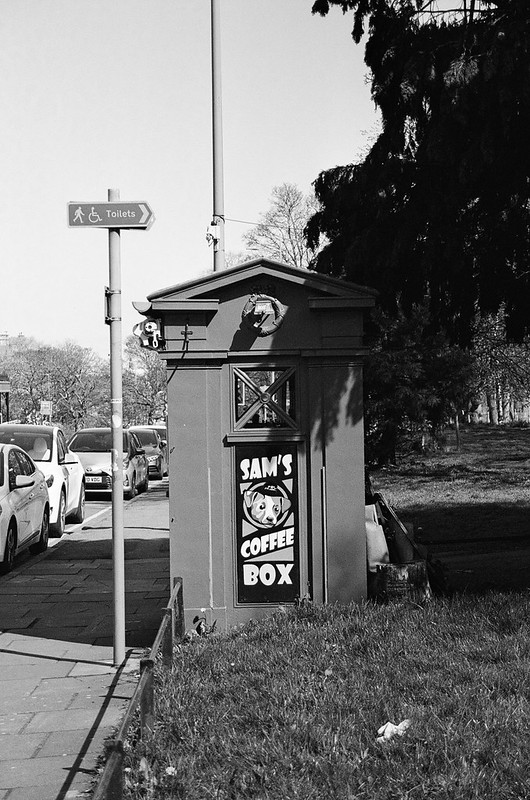
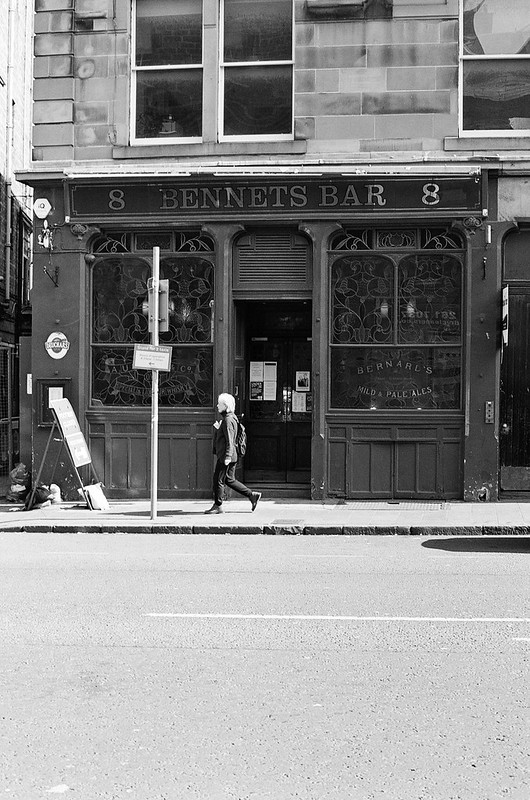
Your experience and conclusion was pretty much identical to mine – it’s a banging bit of kit for the money but good luck finding one which doesn’t have the battery grip. I love the option to use AA’s and despite running countless rolls through mine I’ve not managed to run a set out – paranoia tip, take the batteries out after use!
The focus is much quicker in the 1n than most other Canon film SLR’s but honestly, the end of the line 300x absolutely gives it a run for its money, many years of development show there.
I’d definitely use mine more if I had the normal grip rather than the battery holder, but that weight ultimately kills me during a full day of walking around with it. An absolute monster!
A total throw away aside – you mentioned shutter life. I recently bought a 40D for £9 and fixed it up, out of curiosity I plugged it in and pulled the shutter count – 350,000! It’s *still* going despite being rated for 100,000. Either we’re going to be very unfortunate or the 1D shutter should keep going. Failing that, I bought a spare shutter assembly for £12 that I hope I never have to fit!
Shameless plug – if anyone hasn’t quite had enough 1n action, here’s my experiences of it, I even went to the trouble of making a film GIF so you don’t have to… https://www.the3rs.uk/simply-the-best-of-35mm-the-canon-eos-1n-hs-review/